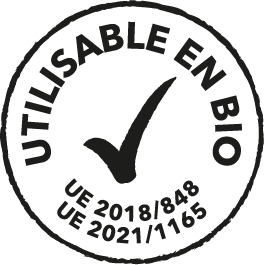Optimized photosynthesis and protection against drought stress
Potassium is taken up by plants from the soil solution only as potassium ions. It is very mobile in the plant and is vital for the plant as it affects the various metabolic processes in many ways. The functions of potassium include involvement in photosynthesis and in the activation of enzymes, synthesis and transport of carbohydrates, natural resistance of plants against pests and diseases as well as frost and drought stress.
Potassium binding forms in the soil
The potassium content of soils is between 0.3 and 3 %. This amount is present almost exclusively in inorganic bond form. The potassium dynamics in the soil are indicated schematically in the illustration below.
Potassium is present in the different K pools as follows:
- Available in the soil solution as K+-ions.
- The potassium ions in the exchangeable fraction are adsorbed to the negatively charged surfaces of cation exchange particles (clay minerals and humus particles). These bonds are weak (simple ionic bonding) and this means that the potassium can be easily released in the soil solution if needed.
- Potassium ions in the non-exchangeable fraction are fixed into holes present in the sheets of clay minerals. These sheets, through contraction and expansion and through weathering processes may release some ‘fixed’ K over a long period of time.
- Potassium located in the lattice is a direct building block of soil silicates. Because this is a very strong bond this potassium is not available for plants. As the silicates weather the potassium ions are released from the lattice to another fraction. This is an ongoing but very slow process.
Soil fertility status
The fraction of potassium that is easily available from the soil solution is the important fraction for plant nutrition. Soil analysis for its plant available nutrients can be used to calculate the fertilizer requirements.
Most countries have a scale of K index with a recommended value for the different types of crop depending on their K requirement. These indices are also greatly affected by the soil.
Potassium has a variety of tasks in the metabolism of the plant
Functions of potassium in plants:
- Affects photosynthesis directly through an effect on the chloroplasts and indirectly through an effect on the closing mechanism of stomata.
- Involved in the metabolism of plants through its involvement in activating more than 50 enzymes.
- Improves the efficiency of water utilization and thereby reduces drought stress.
- Improves synthesis of carbohydrates such as sugar and starch.
- Supports transportation and storage of carbohydrates from the leaves to the storage organs (tubers, grains, beets, etc.).
- Improves the qualitative value of products through higher protein and vitamin content.
- Positively increases the content of organic anions and improves, mainly in connection with sulfate ions, the taste of fruit, and vegetables.
- Promotes the formation of the supporting tissue. This reduces the risk of storage (e.g. cereals) and susceptibility to diseases (e.g. fungi).
- Increases the natural resistance of plants to diseases, pests, and frost.
- Leads to reduced black spot in potatoes.
Severe potassium deficiency results in necrosis of the leaf edge
- First recognizable on the older leaves, as it is very mobile in the phloem.
- Leaves are limp and hang down.
- The whole plant looks limp and wilted, it is called "wilting".
- Starting from the margin, the leaves become increasingly light green.
- Later, leaf margin, leaf tip, and intercostal necrosis appear.
- Growth retardation occurs.
- Leaves remain small and tightly attached to the twig (orcharding).
- There is reduced lignification of the cell walls, which increases the risk of storage in cereals and susceptibility to fungal infections.




